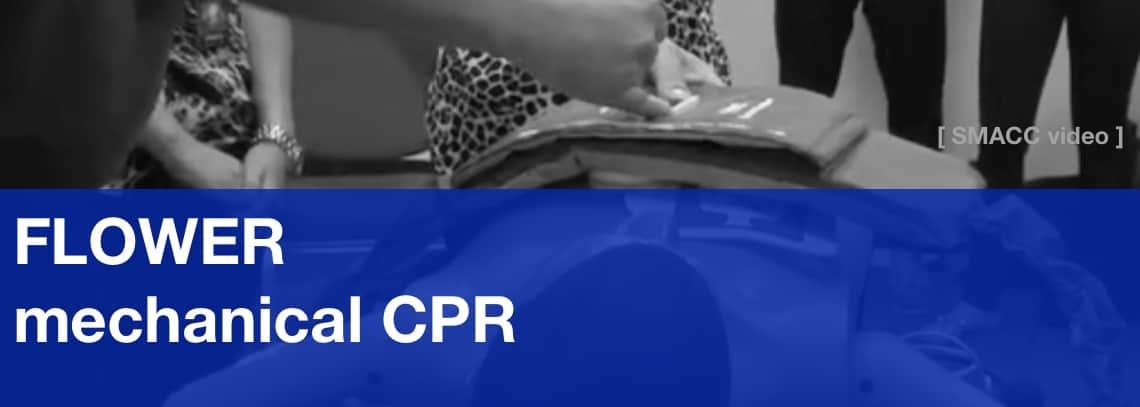Mechanical CPR
By Oliver Flower
In this video presentation, ICN’s own Oli Flower describes Mechanical CPR devices.
Good quality, continuous CPR is a critical aspect of resuscitation. However, providing this is often difficult due to limited staff or space and prolonged arrests, particularly in small or rural hospitals. Transfers, radiology and changing rescuers also often interrupt CPR. Once deployed, mechanical CPR removes these challenges and enables the resuscitation team to take a step back, think and reassess the patient while good quality CPR continues. Devices also enable defibrillation whilst attached which means less chance of rescuers inadvertently shocking themselves while delivering chest compressions.
During this talk, Oli briefly discusses current trials into the use of this equipment and outlines 2 of the available mechanical CPR devices available.
1. The Zoll Autopulse is a compression device that, once deployed, automatically sizes the patient’s weight and thoracic cavity to accurately deliver an evenly distributed thoracic compression. It is however, a heavier device and is radiopaque.
2. The LUCAS Device is a piston style mechanical CPR device which delivers direct compressions through the sternum. It is lighter and radiolucent therefore allowing xrays to be taken whilst in place. The only downside is higher risk of rib fractures and myocardial injury.
A Zoll representative also demonstrates the use of the Autopulse. He outlines the indications and contraindications to using the device and then demonstrates the different components. He exhibits how to set up and use the device including the different modes available and then illustrates the use of the Zoll X-series defibrillator in combination with the mechanical compressions.
This well constructed, easy to follow demonstration introduces viewers to the Zoll Autopulse in the emergency situations.
Importantly, the LINK Trial showed that among adults with out-of-hospital cardiac arrest, there was no significant difference in 4-hour survival between patients treated with a mechanical CPR algorithm or those treated with guideline-adherent manual CPR.
A 2014 Cochrane review also stated that evidence from RCTs in humans is insufficient to conclude that mechanical chest compressions during cardiopulmonary resuscitation for cardiac arrest are associated with benefit or harm. Widespread use of mechanical devices for chest compressions during cardiac events is not supported by this review. More RCTs that measure and account for the CPR process in both arms are needed to clarify the potential benefit to be derived from this intervention.
Is this a case of surrogate end points looking attractive, or haven’t we got the trials right yet? Comments welcome!
[/az_box_icon]
[/az_box_icon][az_buttons animation_loading=”yes” animation_loading_effects=”move_up” buttonlabel=”SMACC Gold” target=”_self” buttonsize=”button-large” checkicon=”no_icon” icon=”font-icon-phone” buttonlink=”https://intensivecarenetwork.com/media/podcasts/smacc-gold-podcasts/”]

























